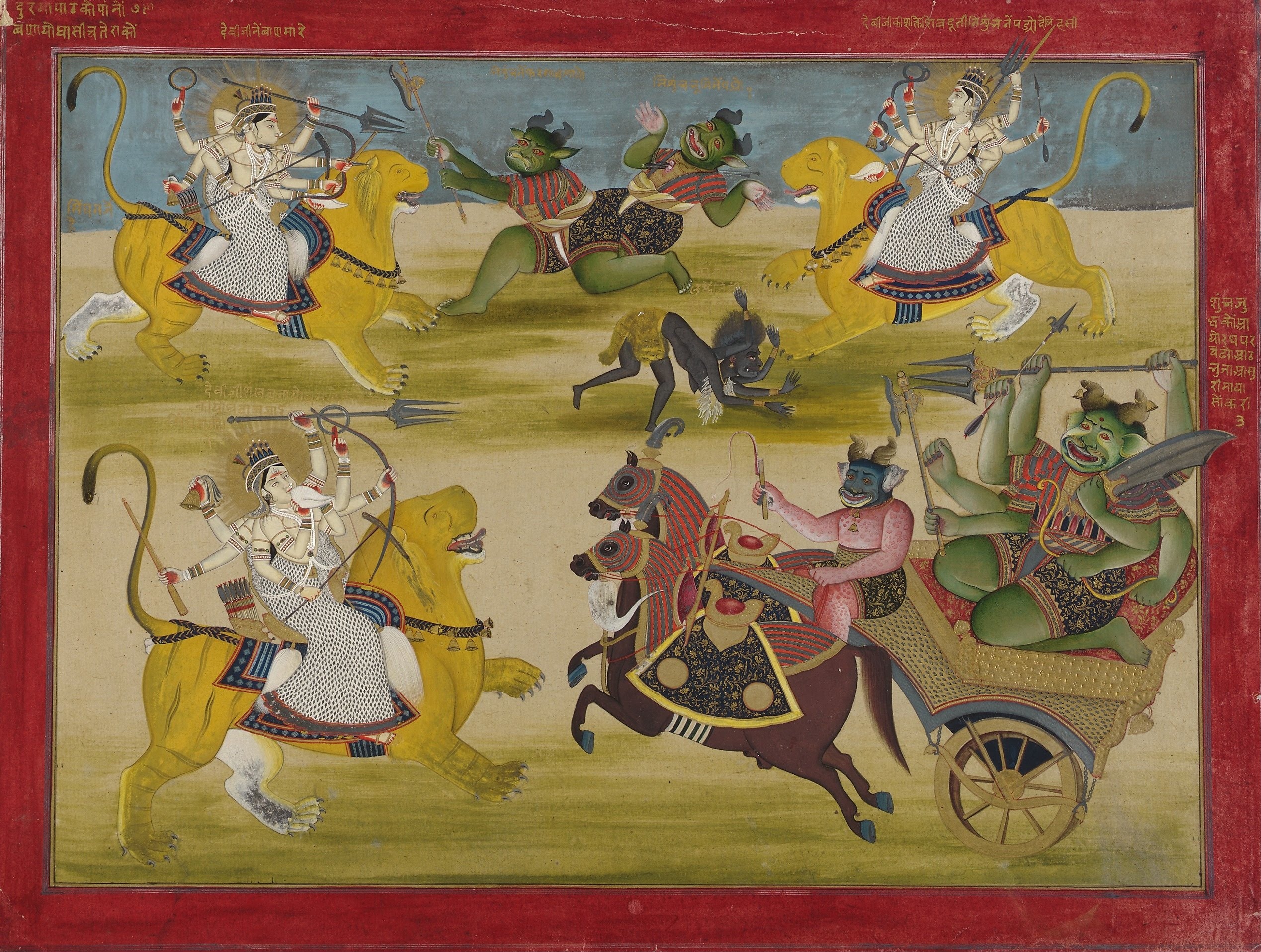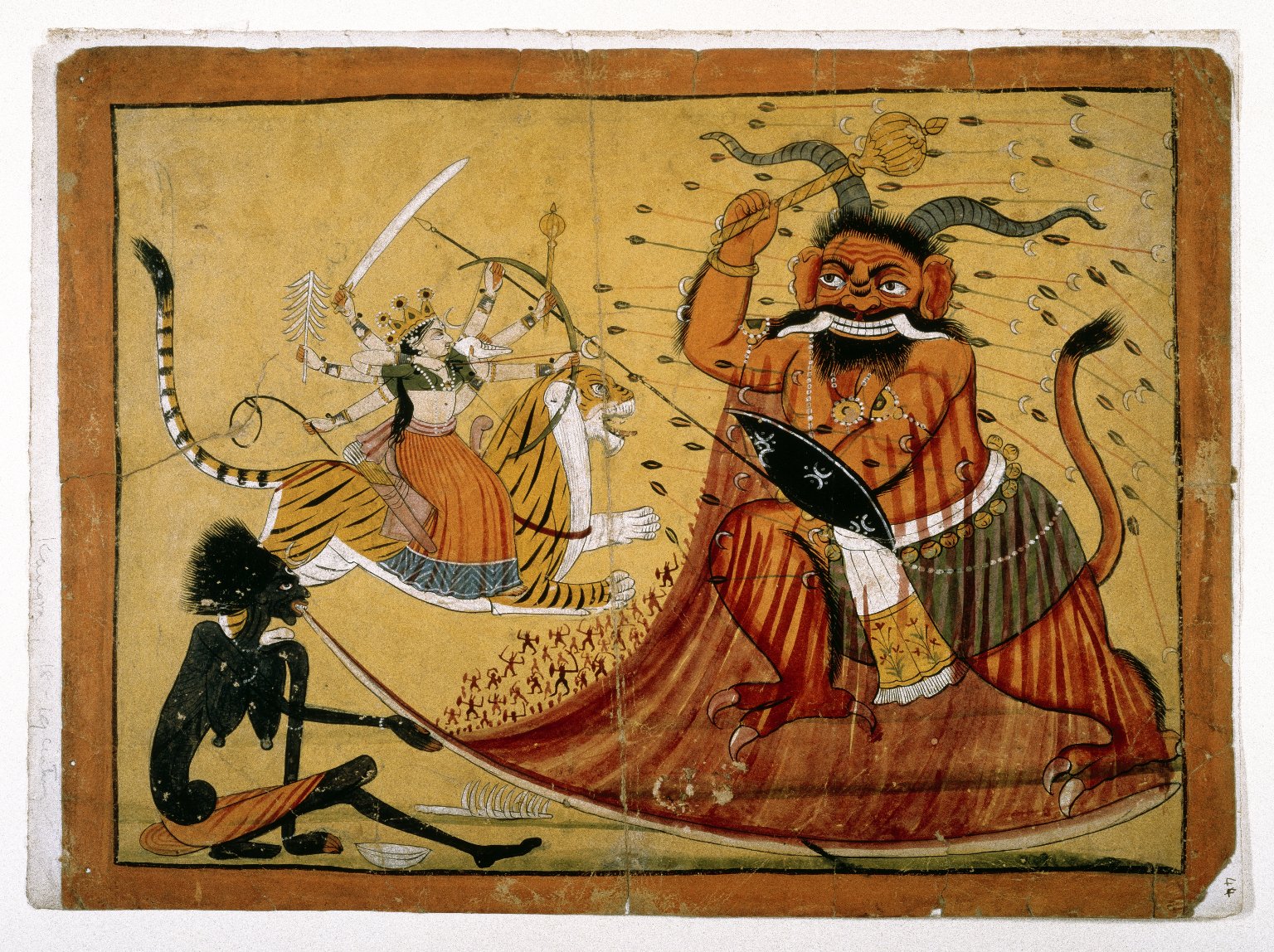|
Caṇḍī
Chandi ( sa, चण्डी, ) or Chandika () is a Hindu deity. Chandika is another form of Mahadevi, similar to Durga. Chandika is a powerful form of Mahadevi who manifested to destroy evil. She is also known as '' Kaushiki'', ''Katyayani'', ''Asthadasabuja'' ''Mahalakshmi'' and ''Mahishasuramardini''. History or is the name by which the Supremely divine is referred to in Devī Māhātmya. Chandi represents the killer of Chanda. ''Chanda'' and Munda were Ashur's strong army generals. The word Chandi also refers to the fiery power of anger of the Brahman. Bhaskararaya, a leading authority on matters concerning Devi worship, defines Chandi as 'the angry, terrible or passionate one'. While scholars debate whether an old Goddess was Sanskritized or a suppressed Goddess was reclaimed, the fact remains that since the very early days, the Devi was worshiped in the subcontinent regardless of whether she appears as a supreme deity in Brahminic texts. Scholars who trace her tra ... [...More Info...] [...Related Items...] OR: [Wikipedia] [Google] [Baidu] |
Devi Mahatmya
The ''Devi Mahatmya'' or ''Devi Mahatmyam'' ( sa, देवीमाहात्म्यम्, devīmāhātmyam, Glory of the Goddess) is a Hindu philosophical text describing the Goddess as the supreme power and creator of the universe. It is part of the Markandeya Purana. ''Devi Mahatmyam'' is also known as the ''Durgā Saptashatī'' () or Śata Chandī (शत् चण्डी). The text contains 700 verses arranged into 13 chapters. Along with '' Devi-Bhagavata Purana'' and Shakta Upanishads such as the Devi Upanishad, it is one of the most important texts of Shaktism (goddess) tradition within Hinduism. The ''Devi Mahatmyam'' describes a storied battle between good and evil, where the Devi manifesting as goddess Durga leads the forces of good against the demon Mahishasura—the goddess is very angry and ruthless, and the forces of good win. In peaceful prosperous times, states the text, the Devi manifests as Lakshmi, empowering creation and happiness. The verses of thi ... [...More Info...] [...Related Items...] OR: [Wikipedia] [Google] [Baidu] |
Mahadevi
Mahadevi ( sa, महादेवी, ), also referred to as Adi Parashakti, Adi Shakti, and Abhaya Shakti, is the supreme goddess in the Shaktism sect of Hinduism. According to this tradition, all Hindu goddesses are considered to be manifestations of this single great Goddess, who is comparable to the deities Vishnu and Shiva as Para Brahman. Vaishnavas consider her to be Lakshmi, Shaivas consider her to be Parvati, Durga, and Mahakali, while Shaktas consider her to be Durga, Tripura Sundari, Bhuvaneswari, and Kali. Author Helen T. Boursier says: "In Hindu philosophy, both Lakshmi and Parvati are identified with the great goddess Mahadevi and the Shakti or divine power". Vaishnavism The goddess Lakshmi is revered as Mahadevi in the Vaishnavite tradition, extolled to possess a thousand names and qualities such as The Bestower of Prosperity, The Lotus-eyed One, The Omniscient One, The One Who Meditates On The Ultimate Reality, as well as The One With The Cosmic Form. ... [...More Info...] [...Related Items...] OR: [Wikipedia] [Google] [Baidu] |
Puruṣārtha
''Purushartha'' (Sanskrit: पुरुषार्थ, IAST: ) literally means "object(ive) of men". Cappeller Sanskrit-English Dictionary, Koeln University, Germany It is a key concept in , and refers to the four proper goals or aims of a human life. The four ''puruṣārthas'' are Dharma (righteousness, moral values), (prosperity, economic values), (pleasure, love, psychological values) and ... [...More Info...] [...Related Items...] OR: [Wikipedia] [Google] [Baidu] |
Chandigarh
Chandigarh () is a planned city in India. Chandigarh is bordered by the state of Punjab to the west and the south, and by the state of Haryana to the east. It constitutes the bulk of the Chandigarh Capital Region or Greater Chandigarh, which also includes the adjacent satellite cities of Panchkula and Mohali. It is located 260 km (162 miles) north of New Delhi and 229 km (143 miles) southeast of Amritsar. Chandigarh is one of the earliest planned cities in post-independence India and is internationally known for its architecture and urban design. The master plan of the city was prepared by Swiss-French architect Le Corbusier, which built upon earlier plans created by the Polish architect Maciej Nowicki and the American planner Albert Mayer. Most of the government buildings and housing in the city were designed by a team headed by Le Corbusier, Jane Drew and Maxwell Fry. Chandigarh's Capitol Complex—as part of a global ensemble of Corbusier's buildings—was ... [...More Info...] [...Related Items...] OR: [Wikipedia] [Google] [Baidu] |
Shri Vidya
Shri Vidya (ISO: '; ; sometimes also spelled Sri Vidya or Shree Vidya) is a Hindu Tantric religious system devoted to the Goddess as Lalitā Tripurasundarī (''Beautiful Goddess of the Three worlds''), Bhuvaneshvari, Maha Lakshmi, etc. A thousand names for this form of are recited in the , which includes concepts. The sect accepts and aims to provide both material prosperity and self-realisation. It has an extensive literature. Details of belief vary in different texts but the general principles are similar to those found in Kashmir Shaivism. Although Shri Vidya is completely against Adi Shankara's Advaita philosophy, in some parts of India, it is believed to be originated from him. In the principally Shakta theology of the goddess is supreme, transcending the cosmos that is her manifestation. She is worshiped in the form of a mystical diagram (Sanskrit: '), a central focus and ritual object composed of nine intersecting triangles, called the Shri Yantra or '. Major ... [...More Info...] [...Related Items...] OR: [Wikipedia] [Google] [Baidu] |
Devi Upanishad
The ''Devi Upanishad'' (Sanskrit:देवी उपनिषत्), is one of the minor Upanishads of Hinduism and a text composed in Sanskrit. It is one of the 19 Upanishads attached to the Atharvaveda, and is classified as one of the eight Shakta Upanishads. It is, as an Upanishad, a part of the corpus of Vedanta literature collection that present the philosophical concepts of Hinduism. The text was likely composed between 9th- to 14th-centuries CE. It refers to ''Mahadevi'' as representing all goddesses. The Devi Upanishad is part of the five Atharvashiras Upanishads important to Tantra and Shakta philosophy traditions. The Upanishad states that the Goddess is the Brahman (ultimate metaphysical Reality), and from her arise Prakṛti (matter) and Purusha (consciousness). She is bliss and non-bliss, the Vedas and what is different from it, the born and the unborn, and all of the universe. Etymology ''Devi'' and ''Deva'' are Sanskrit terms found in the Vedic literature, suc ... [...More Info...] [...Related Items...] OR: [Wikipedia] [Google] [Baidu] |
Mahishasura
Mahishasura is a bovine asura in Hinduism. He is depicted in literature to be a deceitful demon who pursued his evil ways by shape-shifting. Mahishasura was the son of Mahisi (Buffalo) and the great-grandson of Brahmarshi Kashyapa. He was ultimately killed by goddess Durga with her trishula (trident) after which she gained the epithet Mahishasuramardini ("Slayer of Mahishasura"). The Navaratri ("Nine Nights") festival eulogises this battle between Mahishasura and Durga, culminating in Vijaya Dasami, a celebration of his ultimate defeat. This story of the "triumph of good over evil" carries profound symbolism in Hinduism, particularly Shaktism, and is both narrated as well as reenacted from the Devi Mahatmya at many South and Southeast Asian Hindu temples. Legend Mahishasura is a Sanskrit word composed of ''Mahisha'' meaning “buffalo” and ''asura'' meaning “demon”, translating to “Buffalo Demon”. As an asura, Mahishasura waged war against the devas, as the devas a ... [...More Info...] [...Related Items...] OR: [Wikipedia] [Google] [Baidu] |
Sumbha And Nisumbha
In the Devi Mahatmya, Sumbha (शुम्भ) and Nisumbha (निशुम्भ), were two ''asuras'' that confronted, and were ultimately slain by Kaushiki; an avatar of Devi Chandi. In the Devi Mahatmyam The story of Sumbha and Nisumbha begins in the fifth chapter of the Devi Mahatmyam. Parvati relates how two brothers of Asura stock sought to conquer the Three Worlds by subjecting themselves to severe penance and purification rituals so that no man or demon could destroy them. Sumbha and Nisumbha traveled to Pushkara, a sacred place, and remained there in prayer for ten thousand years. God Brahma saw the brothers' penance, and was pleased, granting them the boon they requested. It was at this time that Chanda and Munda, two lesser Asuras in the service of Shumbha, encountered Parvati, and were overwhelmed by her beauty. They carried reports of this goddess to Shumbha, who sought to possess Parvati and her beauty. Shumbha sent the demon Sugriva (asura) to court Parvat ... [...More Info...] [...Related Items...] OR: [Wikipedia] [Google] [Baidu] |
Raktabīja
Raktabija () is an asura in Hinduism. According to the Puranas, he fought with Sumbha and Nisumbha against the goddesses Kali and Chandi, both forms of Durga. Raktabija had acquired a boon from Shiva that whenever a drop of his blood fell on the ground, various Raktabijas would emerge from the spot, equivalent to his strength, form, and weapons. Legend Origin According to the Puranas, Raktabija was, in his previous birth, Rambha, the son of Danu, the king of the asuras. Due to being childless, Rambha and his brother, Karambha, performed a penance to seek offspring. The brothers performed a tapas, with Rambha seated in the midst of five fires, and Karambha in the midst of water. Alarmed, Indra assumed the form of a makara and dragged Karambha into the depths, drowning him. Enraged, Rambha decided to offer his own head to the fires as a sacrifice. Agni appeared before him, and urged him to desist from performing suicide, denouncing it as a great sin. He offered Rambha a b ... [...More Info...] [...Related Items...] OR: [Wikipedia] [Google] [Baidu] |
Chanda And Munda
In Hinduism, in the Devi Mahatmya, Chanda and Munda are asuras (demons) in the service of Sumbha and Nishumbha. After the death of Dhumralochana, Sumbha sent them to fight Devi Kaushiki. After Chanda and Munda approached Devi Kaushiki, she turned black and Kali sprung from her head and killed them. Then, Kaushiki gave the name Chamunda to Kali. Afterward Raktabīja was sent, but was also slain by Goddess Kali. See also * Rambha (asura) * Raktabīja * Sumbha and Nisumbha * Mahishasura * Dhumralochana * Sugriva (asura) ''This character is about the vanara, in the Ramayana.'' Sugriva ( sa, सुग्रीव, , ) is a character In the ancient Indian epic Ramayana. He is the younger brother of Vali, whom he succeeded as ruler of the vanara kingdom of Kis ... References Danavas {{Hindu-myth-stub ... [...More Info...] [...Related Items...] OR: [Wikipedia] [Google] [Baidu] |
Madhu-Kaitabha
Madhu ( sa, मधु, ''Madhu'') and Kaitabha ( sa, कैटभ, ''Kaiṭabha''), also rendered Madhu-Kaiṭabhas, are the names of two asuras in Hindu scriptures, and are associated with Hindu cosmology. Legend Madhu and Kaitabha both originated from the earwax within the deity Vishnu's ears, while he was in the meditative state of yoganidra. From his navel, a lotus sprouted, upon which Brahma, the creator, sat contemplating the creation of the cosmos. Two dewdrops of water upon the lotus were created by Vishnu. One drop was as sweet as honey, and from that drop emerged Madhu, imbued with the attribute of tamas (darkness). The other drop was hard, and from it was born Kaiṭabha, imbued with the attribute of rajas (activity). According to the Devi Bhagavata Purana, Madhu and Kaitabha originated from Vishnu's earwax, and performed a long period of '' tapas'' devoted to the goddess Mahadevi, employing the Vāgbīja mantra. The goddess granted them the boon of death befa ... [...More Info...] [...Related Items...] OR: [Wikipedia] [Google] [Baidu] |




.jpg)




